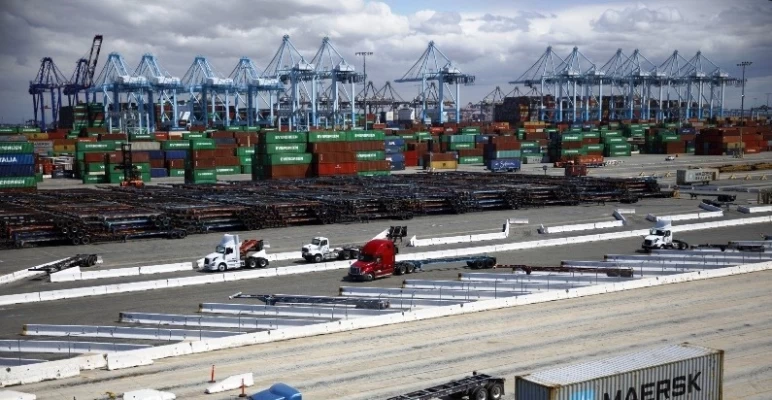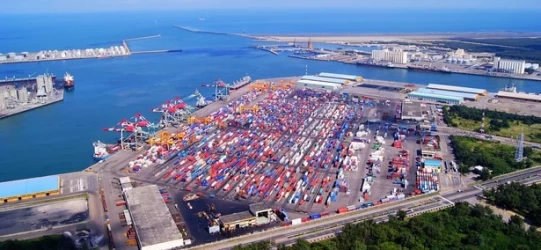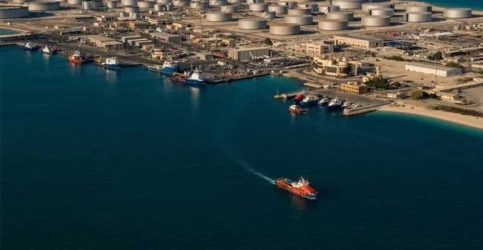Sea freight in the port of Los Angeles
The Port of Los Angeles, often referred to as "America's Port," is one of the largest and busiest seaports in the United States and the world. Located in San Pedro Bay, California, this port plays a critical role in global trade, acting as a major gateway for goods entering and leaving the country. Its modern infrastructure, vast capacity, and strategic location make it a vital hub for maritime transportation, particularly for trade between the U.S. and Asia. Despite challenges such as congestion and environmental concerns, the Port of Los Angeles remains at the forefront of the shipping industry due to continuous investments in sustainability and infrastructure improvements.
Geographical Location and Significance
Situated along the Pacific Coast, the Port of Los Angeles is ideally located for trade with the Asia-Pacific region. Its proximity to key international shipping lanes and its access to the vast consumer markets of Southern California, as well as the inland U.S., make it a crucial point of entry for goods. The port is also connected to a robust network of highways and rail systems, enabling efficient distribution of goods across the country. The strategic location of the port has made it a linchpin in U.S. trade, particularly with China, Japan, South Korea, and other Asian nations.
Port Infrastructure and Terminals
The Port of Los Angeles spans over 7,500 acres of land and water and features 27 cargo terminals, including terminals for containerized goods, bulk cargo, and specialized products such as petroleum. Key terminals include:
- APM Terminals Pier 400: The largest container terminal in the United States, handling millions of twenty-foot equivalent units (TEUs) annually.
- TraPac Terminal: A modern facility specializing in automated cargo handling, improving efficiency and reducing human error.
- West Basin Container Terminal: A major player in the port's container operations, equipped with state-of-the-art cranes and logistics systems.
The port also boasts advanced infrastructure, including automated cranes, large warehouses, and cutting-edge logistics technologies, such as real-time cargo tracking and automated container handling. This sophisticated infrastructure allows the Port of Los Angeles to handle an immense volume of trade with speed and precision, making it a leader in maritime logistics.
Economic Impact of the Port of Los Angeles
As the busiest container port in the United States, the Port of Los Angeles is integral to both the U.S. economy and the global supply chain. The port handles approximately 20% of all cargo entering the United States, with goods ranging from electronics and automobiles to clothing and consumer goods. The value of trade passing through the port exceeds $275 billion annually, with imports making up the majority.
The port's economic influence extends beyond the shipping industry. It supports hundreds of thousands of jobs, both directly and indirectly, in sectors such as transportation, warehousing, logistics, and retail. According to estimates, the port generates nearly $400 billion in annual economic activity for the region and the nation.
Exports through the Port of Los Angeles also play a critical role in the U.S. economy. American-made products such as agricultural goods, machinery, and chemicals are shipped to key international markets, making the port a vital link in the global export chain.
Challenges Facing the Port
Despite its many advantages, the Port of Los Angeles faces several significant challenges. One of the primary issues is congestion, particularly during peak shipping seasons. The port’s high volume of container traffic sometimes leads to delays, bottlenecks, and logistical issues that impact the efficiency of the entire supply chain. This was especially evident during the COVID-19 pandemic, which led to unprecedented congestion at the port due to a surge in online shopping and supply chain disruptions.
Another major challenge is the environmental impact of port operations. The heavy machinery, large ships, and truck traffic associated with the port contribute to air pollution and carbon emissions. Local communities have raised concerns about the health effects of pollution, and environmental regulations have been imposed to mitigate these impacts.
Sustainability and Technological Innovations
In response to these challenges, the Port of Los Angeles has implemented several initiatives to reduce its environmental footprint and improve operational efficiency. One of the key strategies has been the adoption of green technologies, such as electric cranes, low-emission trucks, and the use of shore power for ships docked at the port. These initiatives are part of the port’s Clean Air Action Plan, which aims to significantly reduce emissions of nitrogen oxides (NOx), sulfur oxides (SOx), and particulate matter.
Additionally, the port is investing in smart port technologies to improve efficiency. Automation, artificial intelligence (AI), and big data analytics are being used to optimize cargo handling, reduce turnaround times, and improve the overall management of port operations. The implementation of real-time tracking systems allows for better communication and coordination among all stakeholders, from shipping companies to terminal operators.
Future Outlook and Opportunities
The future of the Port of Los Angeles looks promising as it continues to expand its infrastructure and adopt new technologies. One of the most significant opportunities lies in the port’s potential to become a leader in sustainable shipping. As the global shipping industry shifts toward greener practices, the Port of Los Angeles is well-positioned to capitalize on this trend through its investments in clean energy and low-emission technologies.
Moreover, the ongoing expansion of port facilities and terminals, including deeper berths and larger cranes, will allow the port to handle the next generation of ultra-large container ships. This will enhance the port’s capacity to meet the growing demand for goods and maintain its competitive edge in the global market.
With increasing globalization and trade agreements like the United States-Mexico-Canada Agreement (USMCA), the port is expected to play an even greater role in facilitating international trade. Additionally, partnerships with international shipping companies and logistics firms will further strengthen the port's position as a key player in the global supply chain.
Conclusion
The Port of Los Angeles is a vital artery of the U.S. economy and a cornerstone of global trade. Its strategic location, advanced infrastructure, and focus on sustainability and innovation ensure its continued prominence in the maritime transportation industry. While challenges such as congestion and environmental concerns persist, the port’s proactive measures and forward-thinking investments are setting the stage for a more efficient, sustainable, and technologically advanced future. As global trade continues to evolve, the Port of Los Angeles will remain a pivotal hub in the movement of goods around the world.
If you have any specific questions or need further assistance, feel free to ask!










